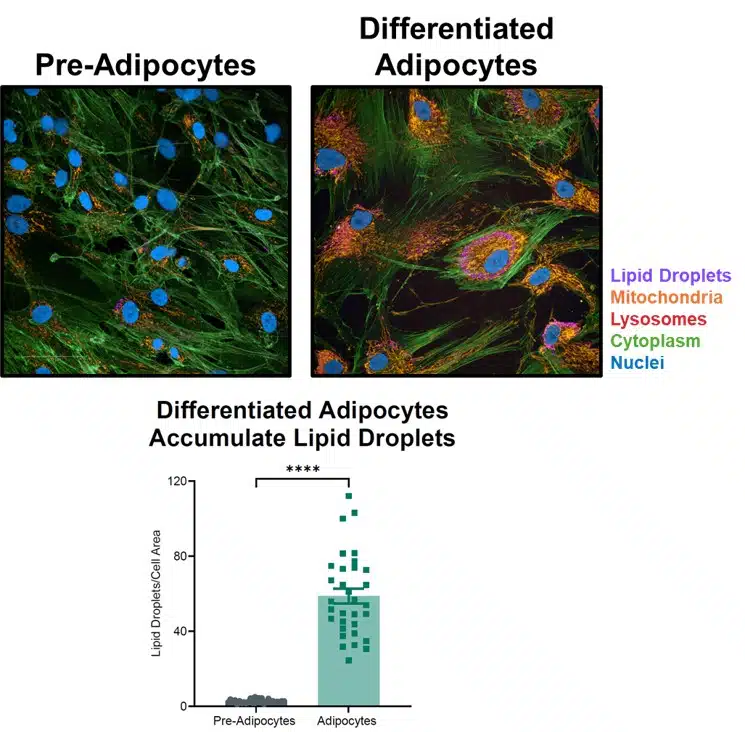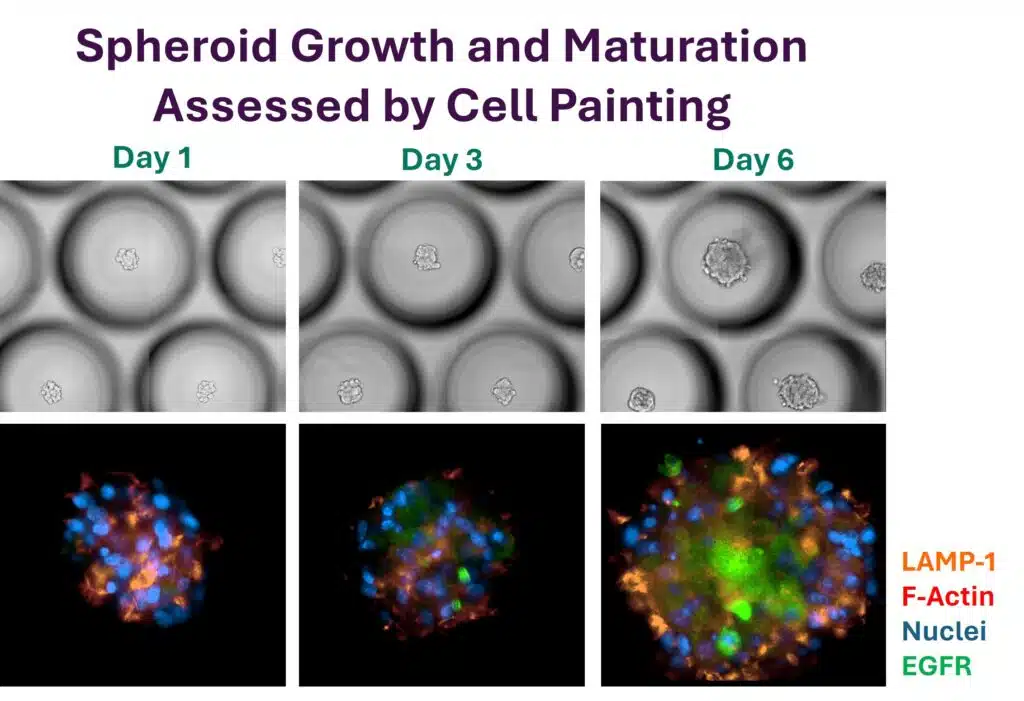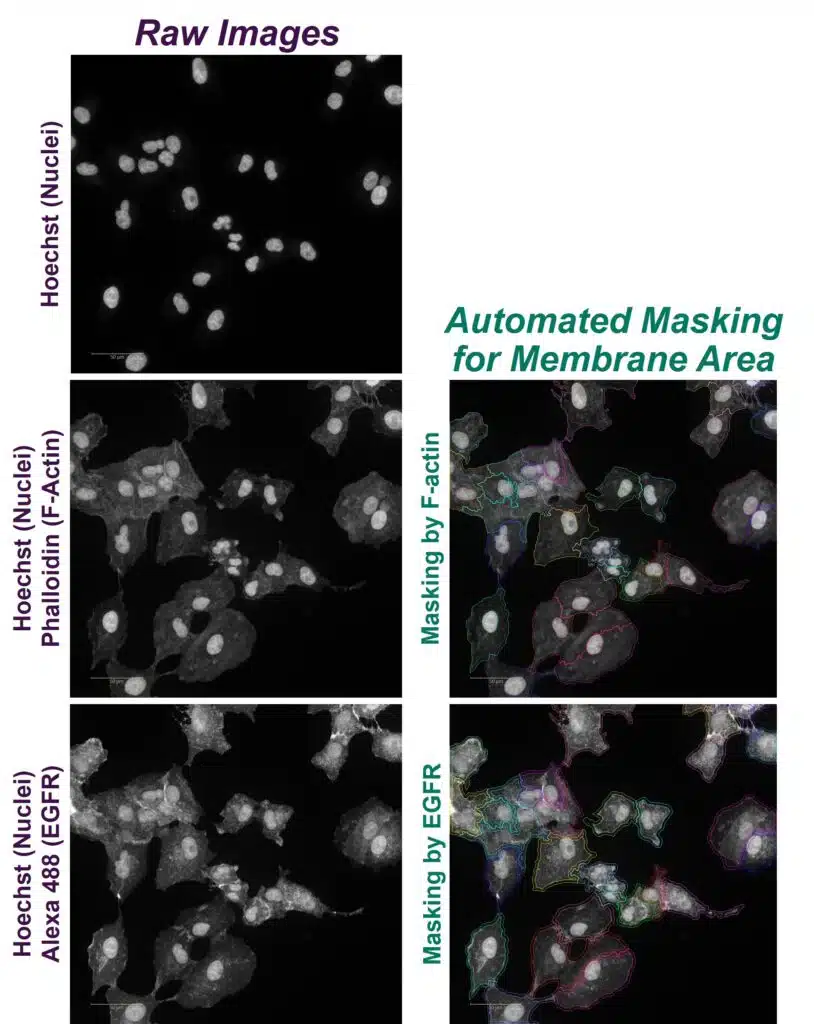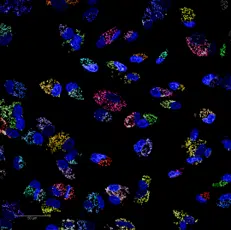
Ichor’s cell painting assays provide detailed, high resolution images to characterize cellular organization and composition, along with automated workflows for analyte characterization and quantitation.
Receptor Internalization and Trafficking
Cell painting facilitates the tracking of cellular receptors. Differential permeabilization provides information on receptor surface presentation or internalization.
Multiplex Labeling
Ichor’s cell painting assays can incorporate up to five fluorescent labels in a single imaging workflow. The simultaneous labeling of multiple cell features provides more information on cell architecture and composition.
Colocalization Analyses
Like traditional confocal microscopy, cell painting assays can be used to infer analyte colocalization, but cell painting is uniquely capable of the simultaneous interrogation and overlay of several cell features.
Organelle Tracking
Multiplex labeling can characterize organelle abundance and distribution, while co-localization analyses demonstrate organelle trafficking and fusion events.
Cell Maturation and Differentiation
As cells differentiate, their morphology and composition changes. Cell painting captures these changes in high resolution, and quantitates maturation features.
Versatile Instruments and Approaches
We use a suite of cell imaging instruments and offer customized workflows to provide superior cell painting for every project.
Advanced software performs automated analyses, utilizing machine learning technology to answer complex cell imaging queries. Image collection and sophisticated analyses deliver precise and reliable results.
Select assays can be performed on live cells during time course experiments to observe temporal trends. For other experiments, sampling and fixing cells at designated time points enables characterization of dynamic cell responses.
For streamlined experiments, Ichor will perform cell or animal treatments in-house and process samples for cell painting assays. Integrating in vivo experiments with downstream imaging improves quality, efficiency, and reproducibility.
Take advantage of our pre-established labeling methods for common cell features, and incorporate your own stains or antibodies for custom labeling profiles. We work with you to optimize label compatibility.
Automated field-of-view sampling collects quantitative data from confocal images. This method removes sampling bias, and provides additional data points for more precise quantitation.
Automated Image Analysis and Quantitation
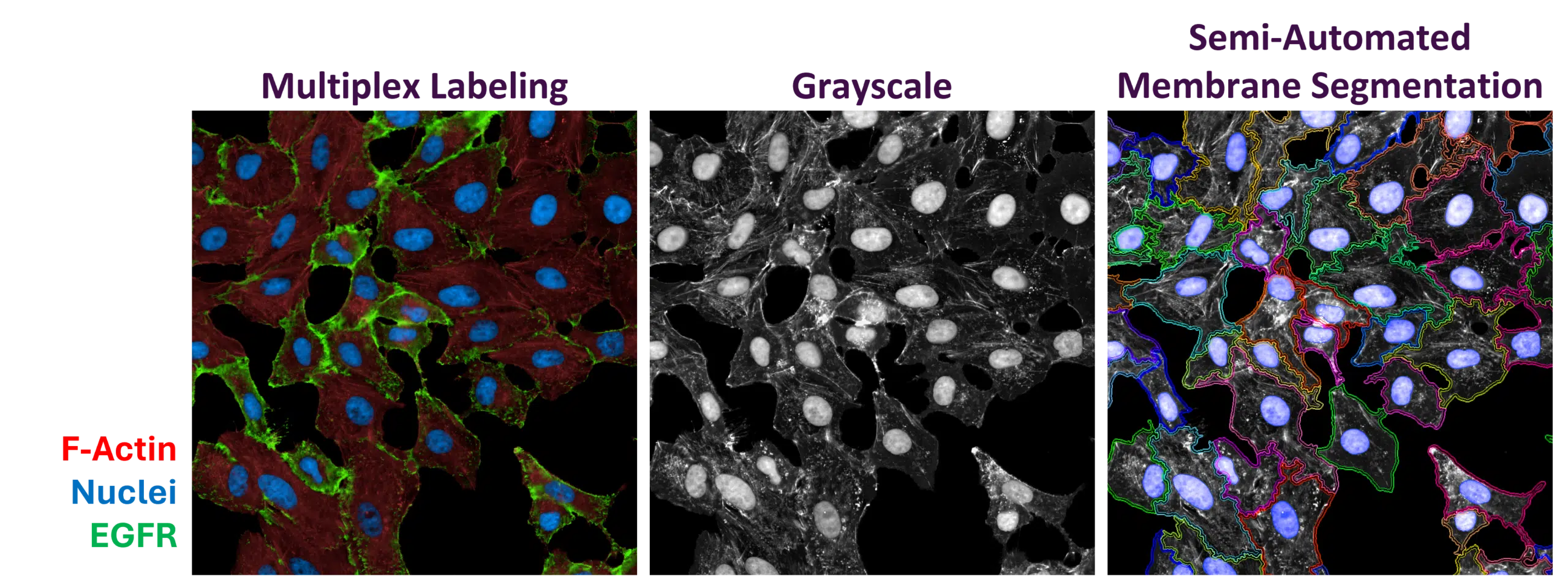
Ichor cell painting procedures enable the imaging of live or fixed cells, 2D or 3D image acquisition, multiplex cell painting with a wide assortment of fluorophores, and high-resolution images acquired by spinning disc confocal microscopy. Additionally, automated workflow and calculation protocols provided reliable quantitation of cell painting assays. Our high content imagers use state-or-the-art processing algorithms to define regions of interest based on fluorophore distribution. This allows for identification of subcellular compartments and organelles, and for the specific interrogation of probe intensity in designated areas. Additionally, automated field of view sampling minimizes bias in measurements and improves the accuracy of your results.
An Image Worth 1,000 Words
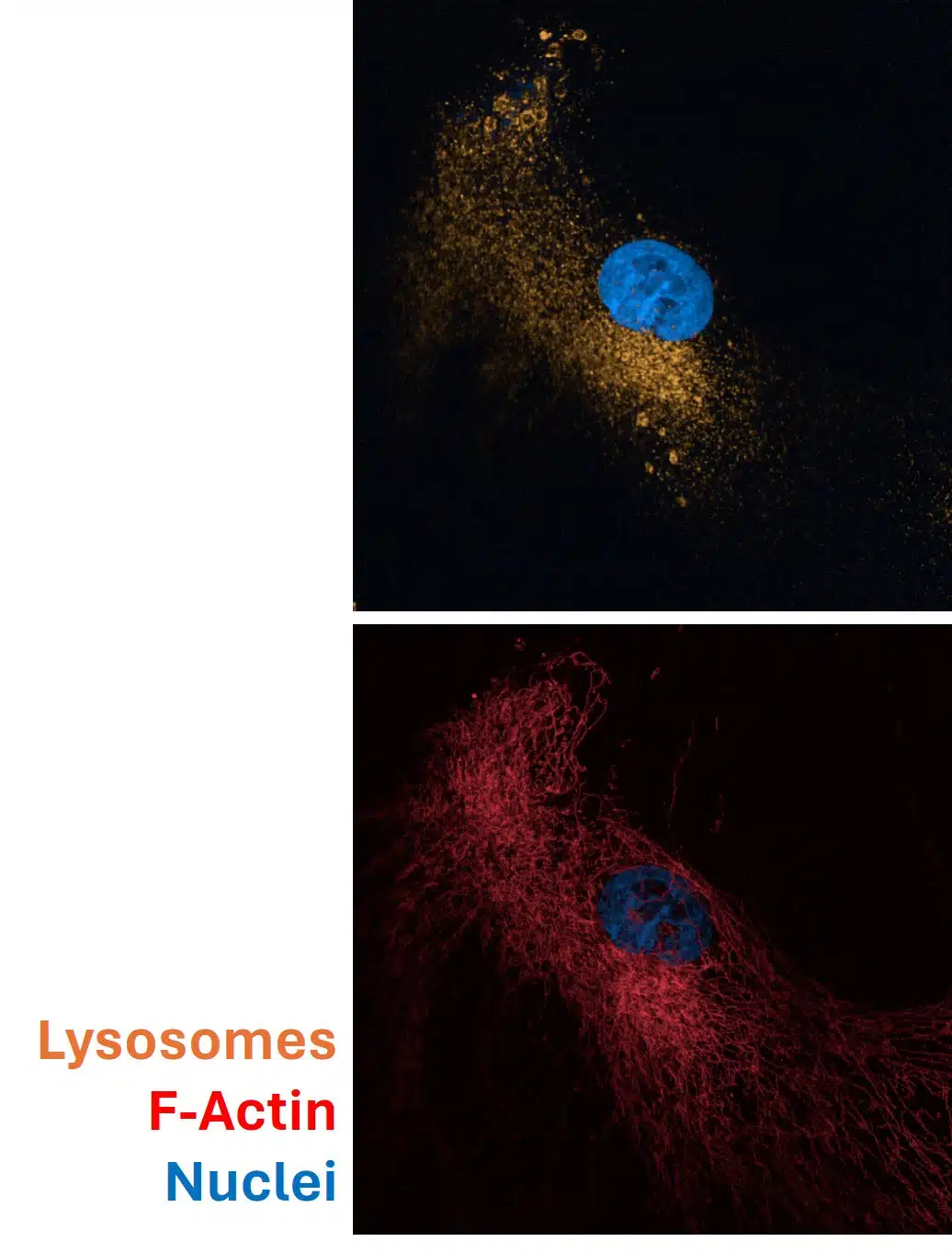
High Resolution Multiplex Labeling
The use of multiple probes in cell painting assays provides high-resolution characterization of cell structure, morphology, and composition. Distribution or co-localization of cellular features can be assessed by this method.
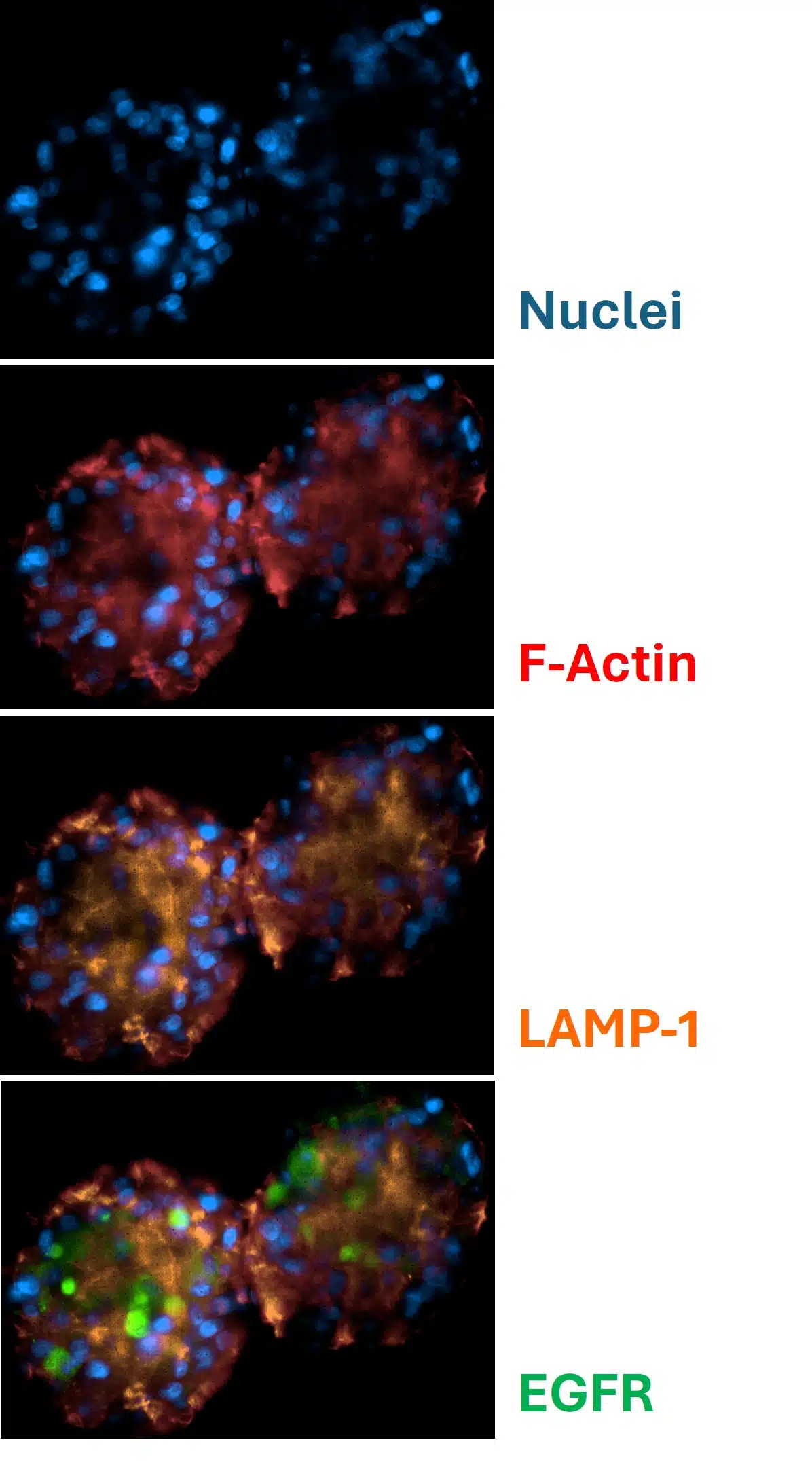
3D Imaging for Spheroid Characterization
Ichor’s cell painting capabilities include characterization of 3 dimensional (3D) assemblies. Our analysis software features an XYZ-viewer to assess structural and compositional attributes in 3D spheroids, organoids, or tissue explants.
Featured Capabilities / Case Studies
Frequently Asked Questions
Explore our cell painting capabilities below.
Depending on your project, you may receive original grayscale images from individual emission channels, pseudo-colored merged images, and masked images. Ichor also provides raw data from automated calculations, and graphed trends with statistical analysis.
Our instruments perform automated quantitation of probe intensity or area from unbiased field of view sampling. This measurement can be performed for an entire field of view, or for designated regions, like the nucleus or membrane.
Our instruments provide high-resolution imaging of a broad spectrum of fluorophores. Chemical probes and conjugated antibodies are easily incorporated into labeling workflows, and high-performance confocal microscopy technology minimizes signal overlap to enable multiplex cell painting workflows.
Certainly. Our scientists can assemble custom labeling panels to ensure instrument compatibility, with adequate emission discrimination between multiplexed fluorophores.
